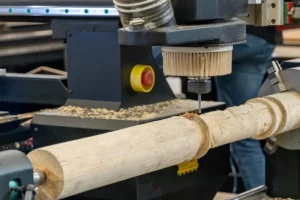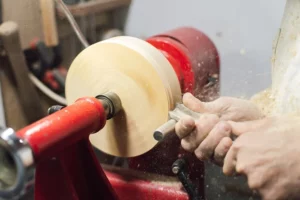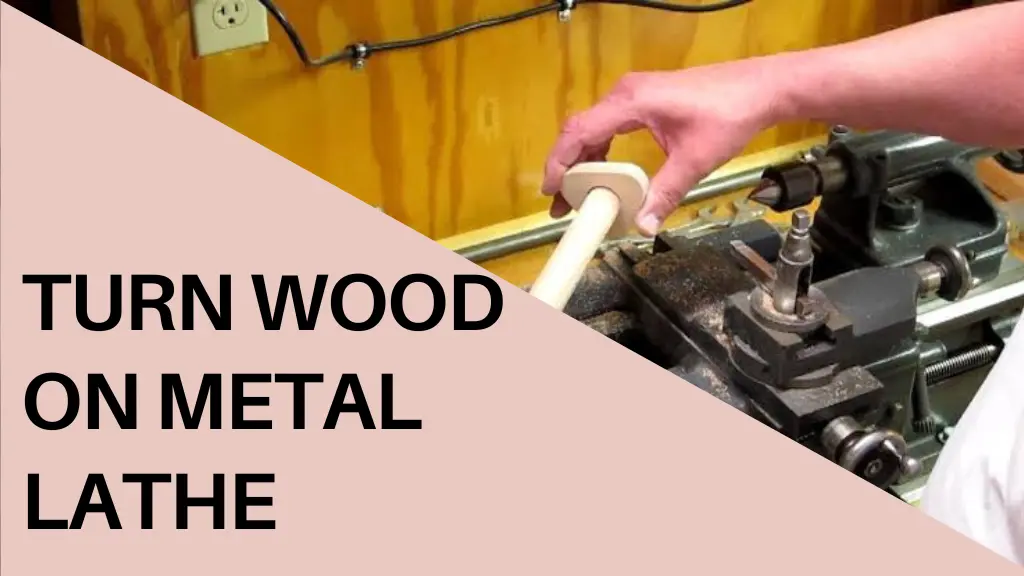Discover the art of turning wood on a metal lathe with expert techniques and essential tips. Unlock precision and versatility in your woodworking projects.
How to Turn Wood on a Metal Lathe

Turning wood on a metal lathe is a unique skill that can open up new possibilities for woodworkers. While the process shares similarities with traditional wood lathes, there are some key differences to keep in mind. Here’s a step-by-step guide:
- Setup: Place your wooden workpiece on the lathe and secure it firmly using the chuck or faceplate. Ensure it’s well-balanced to prevent wobbling during turning.
- Tracing a Profile: Begin by tracing the desired profile or shape onto the wood using a pencil or a template. This outline will guide your turning process.
- Speed Control: Start the lathe at a low speed to avoid any sudden movements. Gradually increase the speed as you progress in shaping the wood.
- Turning Process: Use the lathe tools to carefully remove excess wood and shape the workpiece according to the traced profile. Pay attention to the alignment and balance to achieve the desired results.
- Sanding: After the basic shape is achieved, the surface may appear rough. Sand the wood gently to smoothen it. So Play with coarse-grit sandpaper and move to finer grits for a finish.
- Drilling: If your project requires holes or hollow sections, switch to a router bit with a suitable diameter, such as a 3/4″ or 1″ router bit, to create the desired openings.
Pros of Turning Wood on A Metal Lathe
Turning wood on a metal lathe offers several advantages:
- Sturdiness: Metal lathes are inherently sturdier than wood lathes, providing stability when working with unsteady wood pieces. This reduces vibration and enhances safety. Their powerful motors allow for consistent turning, even on dense or irregular materials
- Precision: Metal lathes excel at creating cylindrical shapes with precise dimensions. The alignment of the tailstock and headstock, along with a robust quill, ensures accuracy. This precision is especially beneficial when working on parts that require tight tolerances or consistent measurements across multiple pieces.
- Drilling Capability: Lathes metal can drill and pierce holes with consistent diameters, allowing for the production of identical lengths and diameters in your wood-turning projects. This capability is especially useful for creating repeatable parts, such as spindles or dowels, where uniformity is crucial. It also streamlines production by combining multiple operations in a single setup.
- Variable Speed: When dealing with challenging wood pieces, metal lathes maintain slower speeds compared to wood lathes. Some metal lathes even come equipped with back-gears for even lower speeds. This controlled speed helps prevent tearing or chipping of delicate wood, ensuring smoother finishes and greater safety during turning.
- Long Wood Pieces: The combination of sturdiness and power feed in the carriage of metal lathes makes them well-suited for turning long wood pieces effectively. This setup provides consistent pressure and smooth movement, reducing operator fatigue and enhancing precision throughout extended projects.
Cons of Turning Wood on A Metal Lathe
However, there are also some drawbacks to using a metal lathe for woodturning:
- Limited to Straight Shapes: Metal lathes are not ideal for creating intricate curved wood shapes, making them unsuitable for certain woodworking projects. Their design focuses on precision and rigidity, which limits the flexibility needed for detailed, freeform carving typically achieved with wood lathes or hand tools.
- Custom Tooling: Tool posts for metal lathes often require custom designs, which can be inconvenient and add to the overall cost. This customization may limit compatibility with standard woodworking tools, making it necessary to invest in specialized equipment or modifications for certain tasks.
- Speed Limitations: The top speed of metal lathes may not cater to specific tasks that require very high RPM. This limitation can affect the efficiency of turning softer materials or delicate wood pieces, where higher speeds are needed for a smoother finish.
- Bed and Slide Damage: When using a metal lathe for wood, the leftover wood shavings can potentially cause damage to the lathe’s bed, carriage, and slide due to the abrasive nature of wood. These shavings may get trapped in the moving parts, leading to increased wear and requiring more frequent maintenance to keep the machine operating smoothly.
- Size Constraints: Many wood lathes can accommodate larger diameters compared to metal lathes, limiting the size of wood pieces you can work with. This makes wood lathes more suitable for turning large bowls, platters, and other sizable projects that require a wider swing capacity.
Metal Lathe Vs Wood Lathe
The primary distinction between metal lathes and wood lathes lies in the materials they are designed to work with:
- Materials: Metal lathes are built to handle hard metals and require significant power and force, while wood lathes are designed for softer wood materials.
- Size: Metal lathes tend to be larger and more expensive than wood lathes, which are typically smaller and more affordable.
Additional Reminders

- Remember that wood lathes are specifically designed for woodwork and can handle larger stock sizes compared to inexpensive metal lathes.
- Clean metal lathes thoroughly after using them for woodturning to prevent corrosion caused by wood dust and shavings.
- Understand that the techniques, tools, and processes for wood and metal lathes differ significantly.
- If you choose to turn wood on a metal lathe, consider using a large steel bar in the tool holder to act as a firm rest for traditional wood-turning tools.
Conclusion
In conclusion, turning wood on a metal lathe can be a valuable skill for woodworkers seeking precision and stability. While it offers distinct advantages, such as sturdiness and drilling capabilities, it also comes with limitations, particularly when working on curved shapes. Remember to adapt your techniques and tools accordingly and ensure proper cleaning and maintenance of your metal lathe when used for woodturning.
FAQs
Can I use a wood lathe for metal?
Answer: No, wood lathes are not suitable for turning metal due to their design and limitations.
Can I work with exotic hardwoods on a metal lathe?
Answer: Yes, you can, but ensure you have the right tools and clean the lathe afterward to prevent corrosion.




